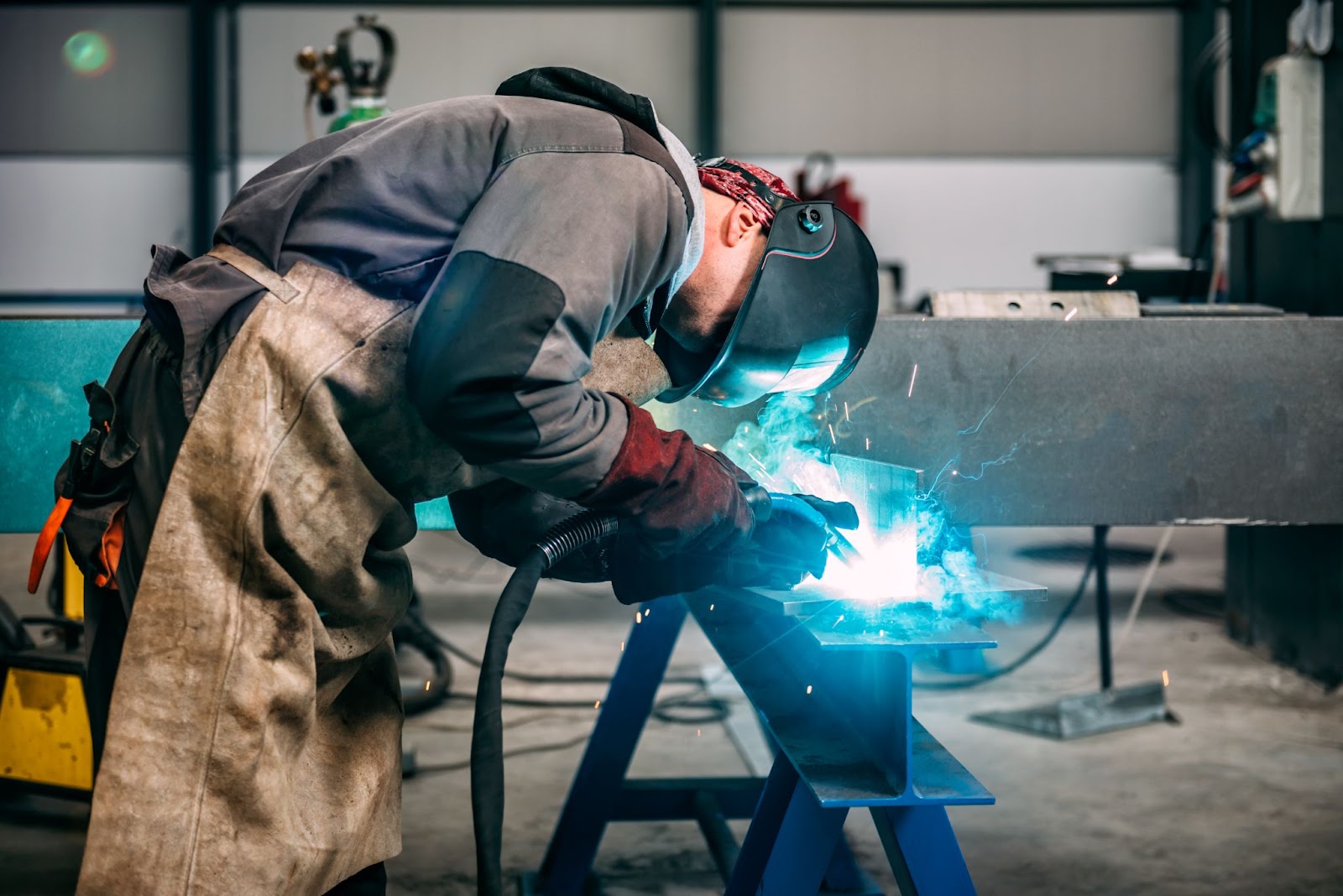How To Avoid Welding Hazards

Various metal components are connected through welding by heating the surfaces to the appropriate melting temperatures.
There are a lot of risks that welders may encounter that can result in serious injuries or even fatalities. So, it is important you have the proper knowledge of the do’s and don’ts for a safe weld to avoid any risks. These recommendations will enable workers to stay clear of potential risks while reducing the likelihood of mishaps and fatalities. Employers must ensure that workers have the proper training and follow safety regulations.
Common injuries of welding
Welding can cause various injuries, the most common of which are skin punctures and cuts. Welding can be risky, so always wear a proper suit if you’re welding. In addition, be careful not to overheat the welds, or they’ll start to melt and release oil.
The most frequent welding damage is burning. They result from incorrect or lack of personal protective equipment (PPE). Spark light radiation can also cause eye injury, a regular risk. Bumps and wounds on the fingers and toes are additional common ailments. In addition to preventing these injuries, using the right PPE promotes mobility. Additionally strongly advised are hearing protection, side-shielded helmets, and leather gloves that can withstand flames.
Welding Hazards
Getting Electric Shocked
Getting Electric shock is one of the most severe dangers a welder faces. It poses a grave risk and could result in critical harm or even death. It happens when welders are put into an electrical circuit by touching two metal items that are in contact with each other and have a current. The shock or an accident resulting from the shock might result in injuries.
How you can avoid Electric Shocks:
- Avoid touching the device or any metallic materials on your skin.
- Wear dry gloves and proper clothing
- Restricting your body’s contact with the metals being welded
- Between the body and the surface, use dry insulation
Toxins And Gasses
Welding is a common process used in many industries but can also harm humans. Welders constantly breathe in fumes and toxins, which can cause serious health problems. Welding uses high-power electricity to cut materials together, which creates harmful fumes and toxins. Welders should be careful and know the dangers of welding fumes and toxins. These toxins and gasses are harmful to the body.
- Acute welding fume exposure can irritate the eyes, nose, and throat and nausea, and cause dizziness.
- Long-term exposure may result in lung, kidney, stomach, and nervous system malignancies and laryngeal, lung, and urinary tract tumors.
Therefore, the welding area must have enough ventilation and exhaust.
Fire And Blasts
Welding sparks generate extremely high temperatures, which inevitably pose a fire risk and explosion. The UV rays are particularly hazardous because they burn unprotected skin and, when exposed for an extended period, cause skin cancer. Extreme heat, sparks, and spatter from the arc can be seen up to 35 feet away. Therefore, any flammable products should be removed from the welding zone before starting work.
You should take flammable items out of the welding area. Additionally, welders must be aware of specific possible risks in their working environments, such as those present in tight spaces or elevated locations.
How to avoid Welding Hazards
Welders should take security measures to avoid welding-related mishaps or injuries, including burns, eye injuries, other skin injuries, and even fatalities from explosions.
Welders must know the safety measures and advice to reduce typical welding risks. More details on some of the control methods that might be applied in your workplace are provided in the section below. This list is not all-inclusive.
- To prevent the fumes and gasses from the breathing zone and the surrounding region, provide sufficient ventilation and local emission.
- Inform a supervisor of any concerns you have so that your exposures to toxic gasses and other toxins can be evaluated.
- Fire and electrical-resistant clothing, hand shields, welding gloves, aprons, and boots can protect workers from heat, flames, electrocution, and burns. Be aware that repeated washings will reduce the effectiveness of flame-retardant coatings. The tops of the boots must be covered by the pant legs, which cannot have sleeves. Sparks can gather in shackles.
- Additionally, workers might be shielded from noises using earplugs or earmuffs.
- Follow lockout and tag-out protocols when doing repairs. Qualified experts should only perform equipment maintenance and repair.
- When welding, keep a fire extinguisher close by. A full extinguisher gauge should be present. Have access to fire hoses, sand buckets, or other items that contain a fire if an extinguisher is not accessible.
- Do not weld within 35 feet of flammable materials.
Conclusion
When performing any welding operation, it is essential to maintain high safety standards. It is legally required of your company to ensure that the risks at work are evaluated, managed, and tracked. They are responsible for making sure that either they or another qualified individual conducts a hazard identification of your location and work-related activities.
Enterprises, households, and paper bag manufacturers in China also benefit from having a professional to do the welding services.
If you are from Australia and looking for a welder that can help you with your welding needs, just hit the net and type “stainless steel welders near me,” and if you are from Belrose and need plumbing services, just hit the net and type “plumber in Belrose” and you will find a reliable and trusted plumber.











